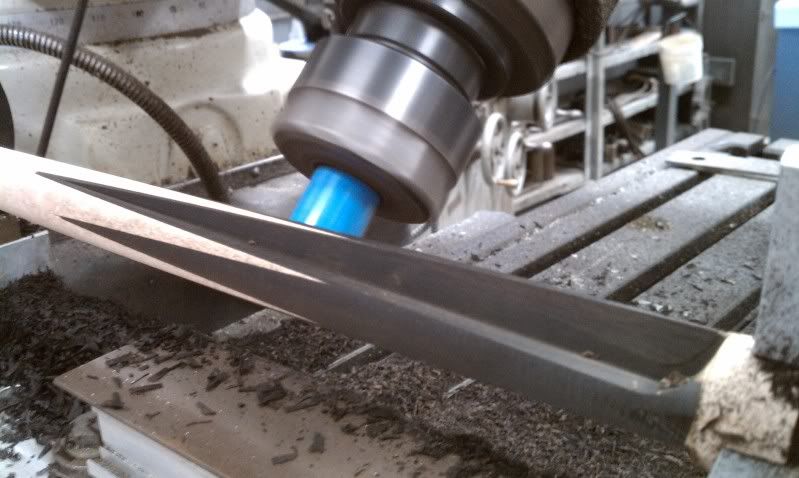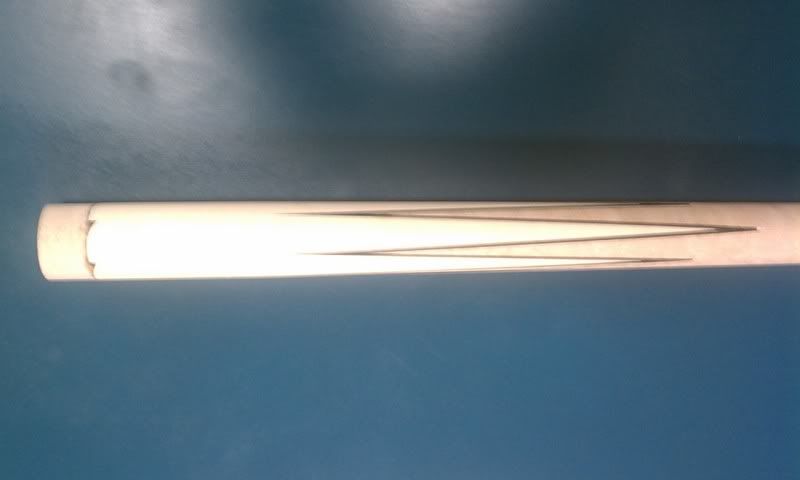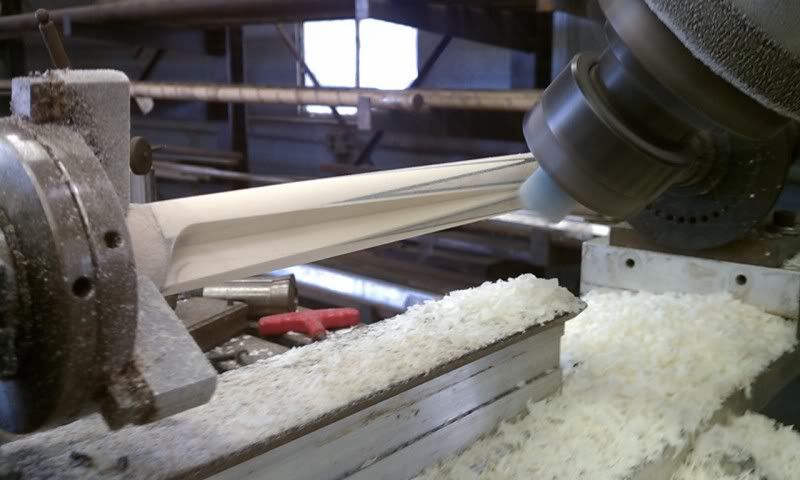You are using an out of date browser. It may not display this or other websites correctly.
You should upgrade or use an alternative browser.
You should upgrade or use an alternative browser.
what is a recut point ???
- Thread starter bbb
- Start date
and how is it different from a "regular" point??
there was a thread about recut points in the main section but i figured i would get a more accurate answer here
since i am not a cue maker a general response is ok
didnt you get your answer here????
http://forums.azbilliards.com/showthread.php?t=394638&highlight=recut+points
didnt you get your answer here????
http://forums.azbilliards.com/showthread.php?t=394638&highlight=recut+points
IM OLD
IM SORRY
:embarrassed2:
thanks for the reminder....:smile:....:thumbup:
IM OLD
IM SORRY
:embarrassed2:
thanks for the reminder....:smile:....:thumbup:
LOL
i understand completely , im old too
im surprised at myself for actually remembering the previous recut thread
wasnt until i dug it up i realized it was YOU
RBC
Deceased
It really all comes down to the miter seam.
The traditional method using individual dyed veneers to make the colors on each side of the point is different from recuts because the colored wood lines on each side of each point are separate pieces. The easiest way to see this is to find the miter where they come together at the end of the point. There are 2 different ways to make that miter joint, and they both look different. It's slight, but it is different.
Recut points have traditionally been done with solid woods, and not dyed veneers. However, wood can be dyed in thicker normal sizes and then used as normal solid woods are used in the recut process. It's all still recuts.
I think it can be confusing about what is a recut and what is veneers. Veneer pointed cues have individual pieces on each side of the point that meet in the middle, forming a mitered joint. Recut points have one piece that is on both sides of the point at the same time and has not miter.
Royce
The traditional method using individual dyed veneers to make the colors on each side of the point is different from recuts because the colored wood lines on each side of each point are separate pieces. The easiest way to see this is to find the miter where they come together at the end of the point. There are 2 different ways to make that miter joint, and they both look different. It's slight, but it is different.
Recut points have traditionally been done with solid woods, and not dyed veneers. However, wood can be dyed in thicker normal sizes and then used as normal solid woods are used in the recut process. It's all still recuts.
I think it can be confusing about what is a recut and what is veneers. Veneer pointed cues have individual pieces on each side of the point that meet in the middle, forming a mitered joint. Recut points have one piece that is on both sides of the point at the same time and has not miter.
Royce
Overlapped, mitered, milled, and re-cut. These are my forever arguments. It's always a great conversation to the point. I think people believe what they want versus the reality of how they are done which gives each discipline their true name.
Recuts and mitered veneers
There is info on regular veneers on my site: Cuebuidling-with-dyed-veneers/mitered-veneers.
Murray shared a great pictorial of the recut method in Anatomy of a cue: recuts. Of course, you'll have to join and log in, but it is free.
Here's a brief synopsis:
Ebony points being recut for holly.

Holly points glued in and turned down.

If you want to get really crazy you can recut the Holly points and inlay another wood.

There is info on regular veneers on my site: Cuebuidling-with-dyed-veneers/mitered-veneers.
Murray shared a great pictorial of the recut method in Anatomy of a cue: recuts. Of course, you'll have to join and log in, but it is free.
Here's a brief synopsis:
Ebony points being recut for holly.

Holly points glued in and turned down.

If you want to get really crazy you can recut the Holly points and inlay another wood.

It really all comes down to the miter seam.
The traditional method using individual dyed veneers to make the colors on each side of the point is different from recuts because the colored wood lines on each side of each point are separate pieces. The easiest way to see this is to find the miter where they come together at the end of the point. There are 2 different ways to make that miter joint, and they both look different. It's slight, but it is different.
Recut points have traditionally been done with solid woods, and not dyed veneers. However, wood can be dyed in thicker normal sizes and then used as normal solid woods are used in the recut process. It's all still recuts.
I think it can be confusing about what is a recut and what is veneers. Veneer pointed cues have individual pieces on each side of the point that meet in the middle, forming a mitered joint. Recut points have one piece that is on both sides of the point at the same time and has not miter.
Royce
Hi Royce...I'm usually in your camp on most subjects but I think you bring up a very good and interesting point. (no pun intended)
What is classified as a veneer? Can a veneer only be a flat piece of wood? I think the confusion comes because traditionally this is whats generally thought of as a veneer. When I google "wood veneer" that is all that is talked about. Flat pieces of wood generally ranging in the 1/40 of an inch range thick that are cut from boards or logs depending the method used and the type of end product required.
Personally I disagree that all veneers have to be produced "flat" as an end product.
All of my cues have a single piece of "veneer wood" for each color on each point.
Whether these are made from solid exotic woods or color dyed woods they are all cut from a single piece of wood into veneer thickness outside of the cue itself.
Most all of my veneers are finish cut to .027-.030 thick before they are installed and glued into the forearm.
When I glue up a 4 point 4 veneer forearm, I am sitting down to apply glue and assemble 21 individual pieces of wood all at one time.
The end result......




So in the case of those that do this style of assembly......YES, the end result visually appears to be "recut" once each piece is glued into place.
In my case though, I can assure you that there is no actual recutting going on that takes place once the gluing procedure begins.
RBC
Deceased
Hi Royce...I'm usually in your camp on most subjects but I think you bring up a very good and interesting point. (no pun intended)
What is classified as a veneer? Can a veneer only be a flat piece of wood? I think the confusion comes because traditionally this is whats generally thought of as a veneer. When I google "wood veneer" that is all that is talked about. Flat pieces of wood generally ranging in the 1/40 of an inch range thick that are cut from boards or logs depending the method used and the type of end product required.
Personally I disagree that all veneers have to be produced "flat" as an end product.
All of my cues have a single piece of "veneer wood" for each color on each point.
Whether these are made from solid exotic woods or color dyed woods they are all cut from a single piece of wood into veneer thickness outside of the cue itself.
Most all of my veneers are finish cut to .027-.030 thick before they are installed and glued into the forearm.
When I glue up a 4 point 4 veneer forearm, I am sitting down to apply glue and assemble 21 individual pieces of wood all at one time.
The end result......
So in the case of those that do this style of assembly......YES, the end result visually appears to be "recut" once each piece is glued into place.
In my case though, I can assure you that there is no actual recutting going on that takes place once the gluing procedure begins.
Dave,
No worries! These are always great conversations, and I enjoy them very much.
The pool industry is unique in that we don't have any kind of individual industry authority to define and standardize things. So, we end up with different names for the same thing.
To me, veneer is by definition just thin wood. But this discussion is about the end result and not the process.
To me, if you can see the joinery, either mitered or stacked, then it's the traditional style of "points with veneers". If you can't see the joinery because it's not there, then it's recut.
Recut points, I believe, are more difficult to do well. Primarily because the cut has to be very accurate to make sure the thin wood on each side of the point is the same thickness.
Some think that if it's veneer colors, then it's the traditional point with veneers, but this isn't necessarily true. As you probably do, maple can be dyed to veneer colors and then recut. They are recuts but with the veneer colors.
A recut, to me anyway, does not have to be made while in the cue. With fixtures, they can be made as completely separate parts. It sounds like you do it this way.
So I guess my position is all about what can be seen on the outside of the cue rather than the materials or methods. If I can see the joinery, then it's traditional. If not, then it's a recut.
Royce
I would call those premilled or precut points. Maybe we need a better name as there a few cuemakers doing this now.Hi Royce...I'm usually in your camp on most subjects but I think you bring up a very good and interesting point. (no pun intended)
What is classified as a veneer? Can a veneer only be a flat piece of wood? I think the confusion comes because traditionally this is whats generally thought of as a veneer. When I google "wood veneer" that is all that is talked about. Flat pieces of wood generally ranging in the 1/40 of an inch range thick that are cut from boards or logs depending the method used and the type of end product required.
Personally I disagree that all veneers have to be produced "flat" as an end product.
All of my cues have a single piece of "veneer wood" for each color on each point.
Whether these are made from solid exotic woods or color dyed woods they are all cut from a single piece of wood into veneer thickness outside of the cue itself.
Most all of my veneers are finish cut to .027-.030 thick before they are installed and glued into the forearm.
When I glue up a 4 point 4 veneer forearm, I am sitting down to apply glue and assemble 21 individual pieces of wood all at one time.
The end result......
So in the case of those that do this style of assembly......YES, the end result visually appears to be "recut" once each piece is glued into place.
In my case though, I can assure you that there is no actual recutting going on that takes place once the gluing procedure begins.
Last edited:
Dave,
A recut, to me anyway, does not have to be made while in the cue. With fixtures, they can be made as completely separate parts. It sounds like you do it this way.
So I guess my position is all about what can be seen on the outside of the cue rather than the materials or methods. If I can see the joinery, then it's traditional. If not, then it's a recut.
Royce
It would be impossible to tell if they are precut or recut points when looking at the cue. So in a finished cue if someone brought one to me asking hoiw it was done, I would call them recut points. But I do think the terms do describe two different methods.
How about just sub-classing what we know as recuts?
Three types of veneers appearing in points:
1. Mitered: <insert definition we all understand>
2. Overlapped: <insert definition we all understand>
3. Milled: <see below>
For type 3, there are two sub classes:
1. Recuts: Seamless veneers that result from cutting Vee grooves in a point (or some facsimile of a point) that is already installed in cue in a previously cut Vee groove. The result is a seamless veneer left from the previously glued in piece of wood.
2. Precuts: Seamless veneers made from one piece of wood by cutting individual Vee grooves into them, independent from both cutting and gluing points into a forearm.
At some point, calling both construction methods recuts is somewhat lacking if precuts have become more prevalent since the term recut was invented to describe the other method.
Three types of veneers appearing in points:
1. Mitered: <insert definition we all understand>
2. Overlapped: <insert definition we all understand>
3. Milled: <see below>
For type 3, there are two sub classes:
1. Recuts: Seamless veneers that result from cutting Vee grooves in a point (or some facsimile of a point) that is already installed in cue in a previously cut Vee groove. The result is a seamless veneer left from the previously glued in piece of wood.
2. Precuts: Seamless veneers made from one piece of wood by cutting individual Vee grooves into them, independent from both cutting and gluing points into a forearm.
At some point, calling both construction methods recuts is somewhat lacking if precuts have become more prevalent since the term recut was invented to describe the other method.
I would call those premilled or precut points. Maybe we need a better name as there a few cuemakers doing this now.
The correct names have always been there. People's understanding of them has always been confused.
If the points start out in a forearm. Glued, indexed and recut point by point by point. (Re-cut)
If they are done individually off the forearm then glued all at once and installed into the forearm. It's a milled veneer.
The correct names have always been there. People's understanding of them has always been confused.
If the points start out in a forearm. Glued, indexed and recut point by point by point. (Re-cut)
If they are done individually off the forearm then glued all at once and installed into the forearm. It's a milled veneer.
I agree and wondered if you meant pre-milled that when you put "milled" in your post, but milled also refers to work done on a CNC Mill or inlay machine. So flat bottom points are actually milled points. It can get confusing.
8
Confusing, very true. I actually should have said:
Individually milled one piece veneers.
I agree and wondered if you meant pre-milled that when you put "milled" in your post, but milled also refers to work done on a CNC Mill or inlay machine. So flat bottom points are actually milled points. It can get confusing.
Confusing, very true. I actually should have said:
Individually milled one piece veneers.
Last edited:
Dave,
No worries! These are always great conversations, and I enjoy them very much.
The pool industry is unique in that we don't have any kind of individual industry authority to define and standardize things. So, we end up with different names for the same thing.
To me, veneer is by definition just thin wood. But this discussion is about the end result and not the process.
To me, if you can see the joinery, either mitered or stacked, then it's the traditional style of "points with veneers". If you can't see the joinery because it's not there, then it's recut.
Recut points, I believe, are more difficult to do well. Primarily because the cut has to be very accurate to make sure the thin wood on each side of the point is the same thickness.
Some think that if it's veneer colors, then it's the traditional point with veneers, but this isn't necessarily true. As you probably do, maple can be dyed to veneer colors and then recut. They are recuts but with the veneer colors.
A recut, to me anyway, does not have to be made while in the cue. With fixtures, they can be made as completely separate parts. It sounds like you do it this way.
So I guess my position is all about what can be seen on the outside of the cue rather than the materials or methods. If I can see the joinery, then it's traditional. If not, then it's a recut.
Royce
No problems.....I guess I've always viewed it as the wood should have to be glued into the forearm and cut again to be a recut.
I've always referred to mine as one piece 90 degree V veneers since I'm not actually gluing them in and recutting them.
They're just not the prototypical flat style veneer.
No problems.....I guess I've always viewed it as the wood should have to be glued into the forearm and cut again to be a recut.
I've always referred to mine as one piece 90 degree V veneers since I'm not actually gluing them in and recutting them.
They're just not the prototypical flat style veneer.
That's the way you should look at it IMO Dave... "V" veneers are not re-cuts but rather v-cuts. :smile: